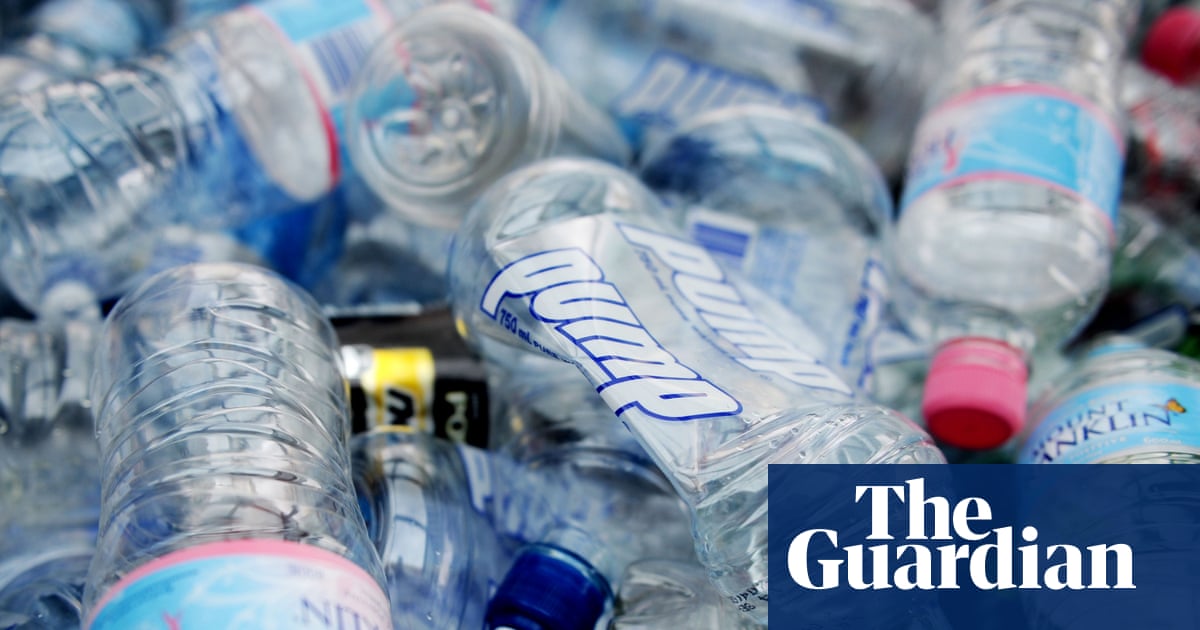Plastics recycling rates in Australia have flatlined as the amount of waste continues to grow, the latest government data reveals.
Australians produced 3.2m tonnes of plastic waste in 2023-24, up from 3m tonnes the previous year, according to Australian plastics flows and fates data released on Friday.
About 39% of the nation’s plastic waste was from packaging.
The data, collected since 2000, showed the total amount of plastic waste had doubled since 2005 (from 1.57m tonnes) but recycling rates had barely shifted despite investments in increased capacity.
Sign up: AU Breaking News email
In 2023-24 the plastics recovery rate was 14.1% compared with 14.7% in 2005, with the majority of material still being sent to landfill.
“We can’t recycle our way out of this,” said Gayle Sloan, the chief executive of the Waste Management and Resource Recovery Association of Australia. “It’s a supply chain challenge, not just a waste challenge.
“If you don’t design well and you don’t buy back, we cannot solve this.”
Despite promises from the government since 2023, Sloan said Australia had still not moved on mandatory design or recycled content standards.
According to the data, of the 446,000 tonnes of plastics diverted from landfill in 2023-24, about two-thirds were recycled in Australia and a third (145,000t) exported for processing overseas.
About 23,000 tonnes of the plastic recovered was sent to energy recovery (where waste was burned as a fuel substitute, or used to generate heat or electricity) in 2023-24, a figure that could increase in coming years as several states pursued waste-to-energy projects.
Plastic consumption was also increasing.
Australians used 4m tonnes of plastic products and packaging in 2023-24 – equivalent to 146kg per person – up from 3.9m tonnes the previous year.
The largest source was due to product packaging, responsible for about 1m tonnes of new plastic each year. Other large plastic users included the built environment (18%), electrical (9%) and clothing (8%).
Almost all of the plastics used in Australia were imported in the form of products and packaging, or as new plastic resins.
On Monday, the environment minister, Murray Watt, reaffirmed Australia’s commitment to tackling plastic waste, after countries failed to reach agreement on a treaty to end plastic pollution in Geneva.
“By boosting recycling capability with our state and territory partners through investments in new recycling infrastructure, we’re making real progress in recovering materials that would otherwise go to landfill,” Watt said.
“On top of this, we’re continuing to work with states and territories to phase out problematic single-use plastics and transforming Australia’s packaging regulations.”
The new data comes as a University of NSW study reviewed the extent of microplastic pollution in Australia – in indoor air, road dust, and freshwater and marine ecosystems.
While further research was needed, the study found microplastics posed a significant threat to human health, biodiversity and ecosystems, and recommended steps to limit plastic pollution.
The report recommended laws to minimise the amount of plastics in products, a ban on the use of soft plastics in restaurants and home kitchens, restrictions on microbeads in personal care, cosmetics and cleaning products, and the introduction of an extended responsibility scheme.
